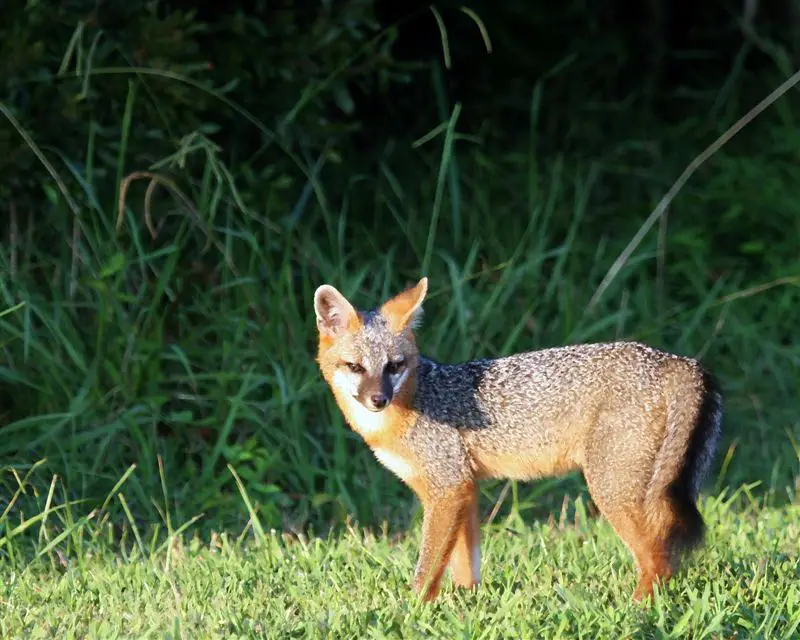The gray fox (Urocyon cinereoargenteus) occurs all throughout the southern North America and South America including Venezuela and Colombia. It is a medium-sized carnivorous mammal and is an expert climber. The fox is considered to be one of the most common fox species in the eastern United States. Gray fox is likely to be dominant when compared to red fox.
Gray Fox Facts
Anatomy
- The gray fox is mainly recognized by its powerful neck and black-tipped tail. Females are slightly smaller than males.
- The fox reaches a total length of about 76 to 112.5 cm (29.9 to 44.3 in) including tail that measure up to 27.5 to 44.3 cm (10.8 to 17.4 in).
- The hind foot of a gray fox is 100 to 150 mm (3.9 to 5.9 in) long.
- Gray fox averages 3.6 to 7 kg (7.9 to 15.4 lb) in weight.
- Thanks to its amazing climbing ability using hooked claws gray fox manages to escape predators like domestic dogs and coyote.
- It is able to climb vertically 18 meters high above the tree.
- The fox is entirely nocturnal as it also shows crepuscular behavior. It is thought to make dens in hollow trees during the day.
- They make dens 30 feet above the ground.
- During winter, gray foxes prefer to remain alone.
Distribution & Habitat
- Gray foxes are distributed throughout the southern Canada, northern tip of South America as well as southern North America.
- The fox’s habitat is found in open deserts, canyons, wooded areas, denser brushy cover, or on the slopes of rocky ridges.
Read More: Gray Fox Facts for Kids

Feeding Ecology & Diet
- The gray fox is a solitary animal. It typically hunts eastern cottontail in the eastern United States. The fox also eats mice, birds, voles, acorns, seeds, amphibians, reptiles, eggs, and shrews.
- The diet consists of brush rabbit and jackrabbits in California.
- In much of the United States, gray fox has an insectivorous or herbivorous diet.
- It supplements the diet with some fruits but also rely on vegetables.
- Gray fox is able to reach a speed of 28 miles per hour but it doesn’t last too long.
Behavior
- The gray fox does not only jump high up the tree but it can also jump from one branch to the other. Surprising that is, especially for a mammal nearly the size of coyote.
- It climbs so frequently that gray fox is sometimes referred to as tree fox.
- The home range of gray foxes is 75 – 653 hectares.
- Although highly vocal, gray foxes also communicate visual signals. They become rather more vocal during the breeding season. The sounds include ‘barks’, ‘squeals’, ‘chuckles’, ‘growls’, and ‘yips’.
Reproductive Biology
- In Michigan, mating occurs in March while in Alabama breeding peaks in February.
- There are 1 to 7 young in one litter. The gestation period lasts about 53 days. The pups are dark brown in color and they are blind in the initial 10 days of their birth.
- Young foxes will hunt along with the parents at 3 months age. At the age of 4 months, kits may forage on their own.
- Young becomes independent after 35 days. Pups weigh 86g (3 oz) at birth.
- The young will disperse and leave the family soon after they reach maturity.
- The captive gray fox lives up to 10 years while the lifespan in the wild is 5 – 6 years.
Predators
- Great horned owls
- Golden eagles
- Coyotes
- Bobcats
Conservation Status
Least Concern






Leave a Reply